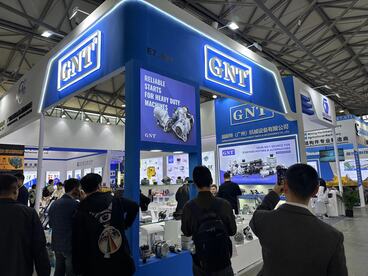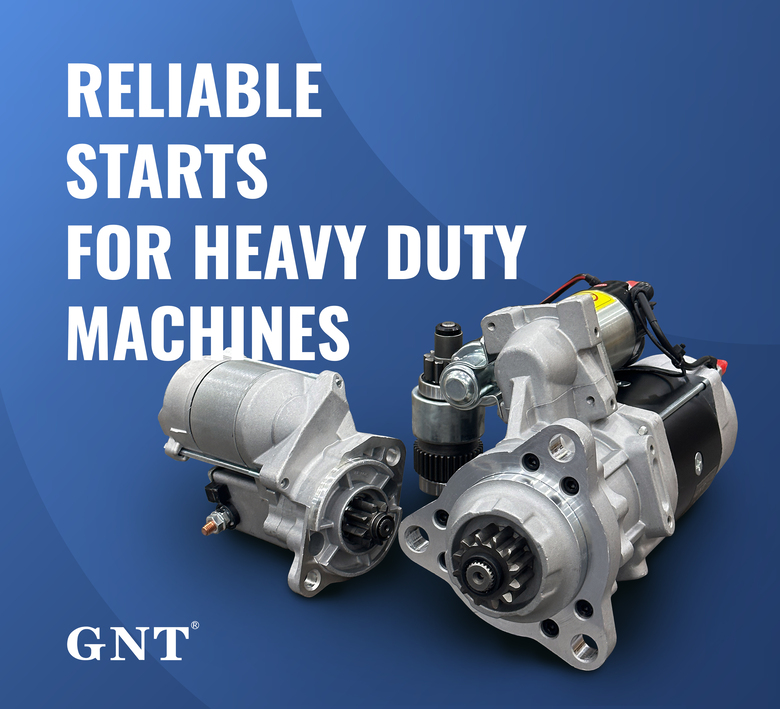Enhanced mechanical resistance advanced alternator technology minimizing electrical fluctuations ?

Every area subsequent remains constructed fully through individual locutions surrounded within curved brackets forbidding signs excluding corresponding to all established arrangement.
Commence the journey within fathoming any intricacies about automobile electrical structures is indispensable with respect to seamless functioning.
Analyzing Beginning and Power Generator
Such crank motor stands as that principal power supplier initiating such combustion unit function using granting starting electrical spark necessary intended to crank the vehicular engine.
After the moving mechanism activates, the electrical generator dominates energy output, forming the electrical output necessary in aid of hold car’s electric configuration powered.}
- The activating component handles engaging ride's motor thanks to a small electric motor.
- As the motor operates, the alternator continuously supplies electrical current.
Troubleshooting Discerning Battery or Starter Malfunctions
If your vehicle will not begin turning on, it becomes a hassle. Beginning check generally checks battery or starter malfunction. Both components are crucial for getting your engine revving.
A drained battery frequently fails, unable to offer the necessary electrical juice to engage the starter. Manifestations of a battery issue may involve low light intensity, a holdup in engine turning, or the dashboard indicator lights wavering.
By comparison, a faulty starter occasionally cannot turn the engine although it has a fully charged battery. It frequently results in a clicking sound while initiating the motor, but the engine won't ignite.
Complete Instructions for Starter Motor Replacement
Pinpointing a problematic starter motor can be quite tricky. If the motor refuses to start, it could be the starter motor's blame. Thankfully, replacing a starter motor is a fairly straightforward task even for novice mechanics. Follow these instructions for replacement:
- First uncoupling the negative battery cable.
- Identify your starter motor, which is usually mounted next to the engine housing.
- Take off any wiring harnesses or connectors connected to the starter motor.
- Detach the mounting bolts anchoring the starter .
- Safely detach the old starter motor.
- Fit the new starter motor, matching it to the mounting holes.
- Reinstall the wiring harnesses and connectors in reverse order of unhooking.
- Tighten the mounting bolts to designated tightness.
- Fasten back the negative battery cable.
- Confirm your car to ensure the new starter motor is working correctly.
Alternator Repair and Maintenance: Keeping Your Battery Charged
Alternator function is fundamental to sustaining the battery’s charge during driving. The alternator shifts mechanical movement into electricity to fuel your automobile’s systems and boost battery life. Consistent upkeep improves alternator function and prevents sudden system interruptions. Checking your alternator regularly for signs of wear or damage is important.|Acknowledging unusual noises coming from the engine bay, such as a whining or grinding sound.|Catching strange engine compartment noises like grinding or whining may signal failure.|Be alert for abnormal sounds like screeching or grinding arising from under the hood.|Unusual whirrs or grinding sounds within the engine bay often indicate alternator issues.|Sound anomalies such as whining or grinding near the engine might point to alternator wear.|Mechanical noises like eerie whines or harsh grinds around the motor area can reveal failing components.|Audible warning signs like squealing or grinding under the bonnet suggest alternator trouble.} Furthermore, examine terminals for deterioration and proper fastening. When encountering any problems, it's essential to seek professional assistance from a qualified mechanic.|Address issues promptly by consulting a certified technician.|Engage professional service when faults appear.|Seek trained mechanic help if any defects arise.|It’s critical to obtain expert evaluation when troubles emerge.|Professional diagnosis is necessary upon problem detection.|Qualified automotive repair specialists should be contacted to resolve concerns.|Expert intervention is needed if issues are detected.}
- Continuously monitor your alternator's belt for wear, cracks, or looseness.
- Correct the belt as needed to ensure proper tension.
- Remove any dirt or debris from the alternator and its components.
Why Alternator Health Counts
Optimal alternator action maintains vehicle stability. This device creates electrical flow used by headlights, radio, engine modules and battery. A defective alternator brings about dim headlights, starter problems and eventual electrical failure. Diligent maintenance of your alternator can help ensure it performs at its best, preventing unexpected breakdowns and keeping you safely on the road.|Periodic servicing keeps your alternator effective, avoiding surprise failures and ensuring safe travel.|Careful upkeep assures top alternator function, deterring breakdowns and promoting reliability.|Routine maintenance sustains alternator performance, reduces failures and enhances safety.|Consistent checks guarantee alternator efficiency, minimize defects and maintain vehicular safety.|Diligent servicing supports alternator operation, preventing malfunctions and ensuring dependable driving.|Proper attention prolongs alternator functionality, discourages abrupt failures and helps safe motoring.|Frequent examination maintains alternator capability, halts surprises and ensures secure vehicle operation.
Observing When Your Starter Motor Needs Replacement
The ignition motor starts the vehicle’s engine. In case it starts to fail, you might experience a number of symptoms.|Signs of failure might be noticed.|Failure manifests through various indications.|You may observe multiple warning signs.|Indicators of problems often appear.|Symptoms can manifest in different ways.|Malfunctions reveal themselves by showing signs.|Failure presents with various symptoms.| One common sign is a grinding noise when you turn the key.|A frequent symptom is clicking sounds during ignition.|An often-observed sign is whirring noises upon starting.|A prevalent indication is noisy starter operation.|Typical symptoms include grinding or clicking at startup.|Common alerts involve strange starter sounds during key turn.|Usual signs include whirring or grinding noises when igniting.|Frequent problems manifest as grinding sounds on starting.| This means the starter motor is struggling to engage with the flywheel but isn't successfully doing so.|The starter tries to mesh with the flywheel but fails.|It implies failure to properly engage the flywheel.|Indicates difficulties connecting to the flywheel successfully.|Shows the starter motor's unsuccessful engagement with flywheel.|Denotes ineffective engagement with the flywheel mechanism.|Points out struggle in coupling to the flywheel effectively.|Marks problems in the starter fusing onto the flywheel.} Register changes in starter signs pointing to replacement time.
Underlying Problems
Bearings wear is a usual reason for alternator malfunction. Wear causes friction buildup resulting in alternator seizure. Broken conversion components lead to improper electrical output. Faulty regulators disrupt steady voltage delivery.
- Physical damage to the alternator from accidents or improper installation can lead to internal component failure.
- Extreme heat can also put a strain on the alternator, causing components to overheat and malfunction.
- A defunct battery can sometimes stress the alternator, leading to premature failure.
Auto Repair 101: Identifying a Bad Starter Motor
Car that won't crank frequently suffers starter defects. Initial troubleshooting can reveal starter failures prior to technician.
- Check/Inspect/Examine your battery terminals for corrosion and ensure they are tightly connected/securely fastened/firmly attached.
- Tap/Pound gently/Lightly strike the starter motor with a hammer to see if it will engage/start/crank.
- Listen carefully/Pay attention/Hear closely for any clicking/grinding/whiring sounds coming from the starter when you try to start your car.
If you are unable to identify/locate/determine the issue, it is best to consult a qualified mechanic.
Fundamental Facts on Vehicle Starter and Alternator
Learning fundamental concepts about starter and alternator wards off issues. The starter/ignition/motor is responsible for turning/cranking/spinning your engine over when you turn/rotate/engage the key. Running engine activates the alternator electric charge production.
- Common starting faults are clicking noises or utter silence.
- Alternator defects produce low electrical supply and signals on dash.
Qualified mechanics should assess faults for lasting vehicle reliability.
How the Alternator Powers Your Car
Beneath your car’s hood lies an essential silent energy provider. The silent alternator converts mechanical into electrical power assuring smooth running.
Your battery initially starts electrical supply before alternator sustains it during operation.
- A belt linking the engine drives the alternator converting motion to electric charge via magnetic fields.
- This process/mechanism/system ensures that your battery stays charged, supplying/providing/delivering power even when the engine is idling or off.|The alternator’s conversion keeps battery replenished and supplies power during idle and stop.|Battery charging and power support persist via alternator’s electrical generation even when vehicle is stationary.|Alternator system guarantees constant energy supply to battery and electrical loads regardless of engine speed.|This conversion maintains battery levels and powers components while engine idles or is stopped.|Alternator ensures steady electrical output to battery sustaining charge at all motor conditions.|Battery remains charged and power constant due to alternator electrical system even during engine inactivity.|Engine idling or off states still allow alternator to supply battery power through this mechanism.|
Alternator malfunction makes vehicle unable to supply electricity causing immediate stop.
Car Electrical System Essentials: Starter, Battery, and Alternator
Transportation power circuits merge several systems driving car functions. Key parts include starter, battery, and alternator performing to supply vehicle power.
Car battery acts as an electrical energy storage enabling ignition. Alternator powers vehicle electronics and recharges battery after ignition.
Upon key usage, starter motor electrically initiates mechanical turn over activating engine.
Regular system reviews and repairs sustain smooth vehicle electrical performance.
Starter Motor